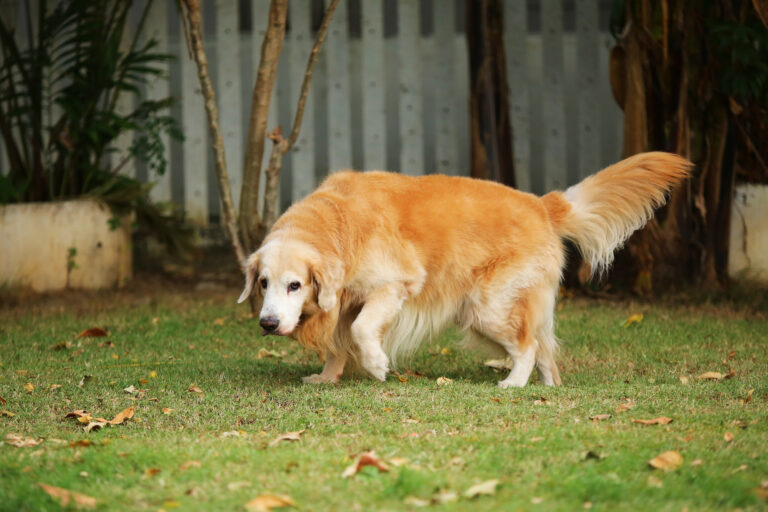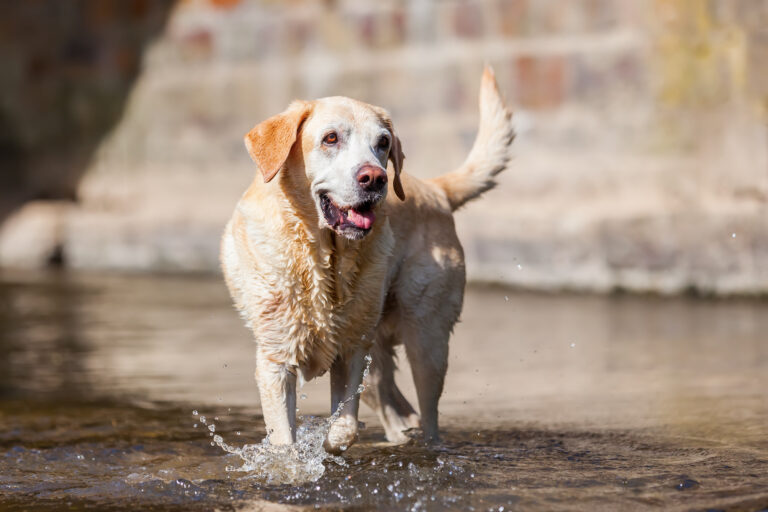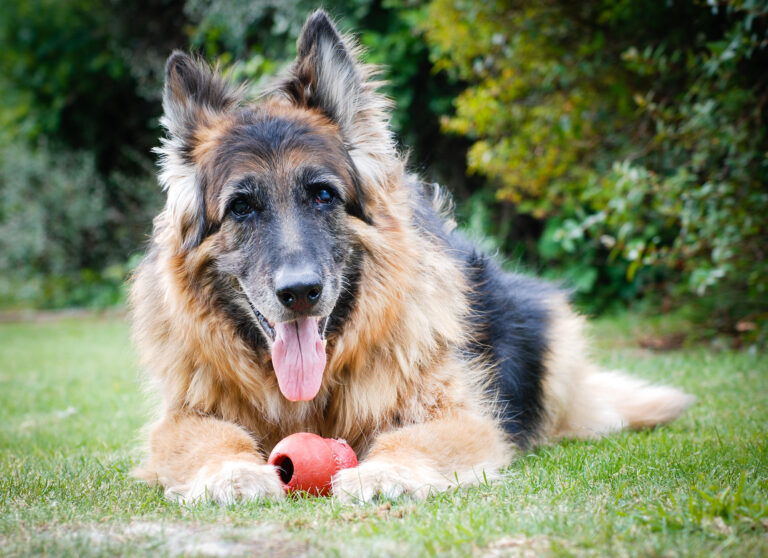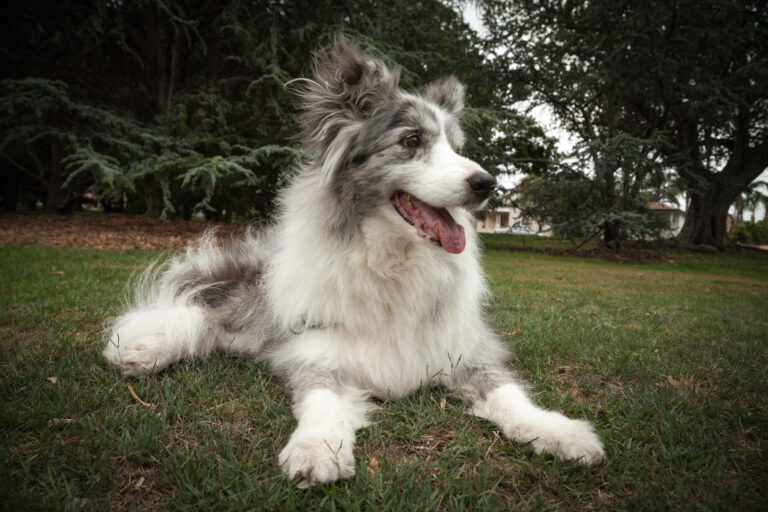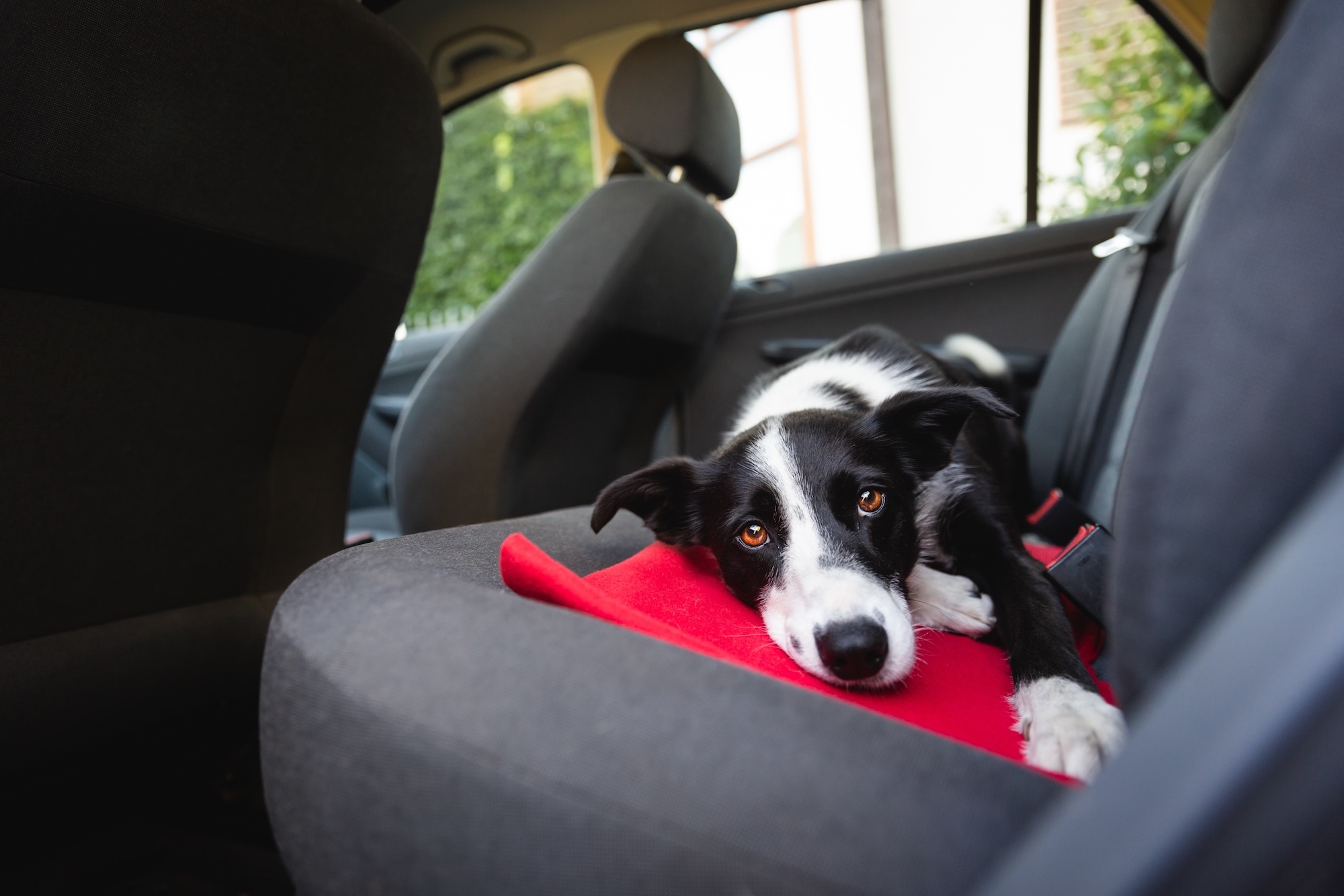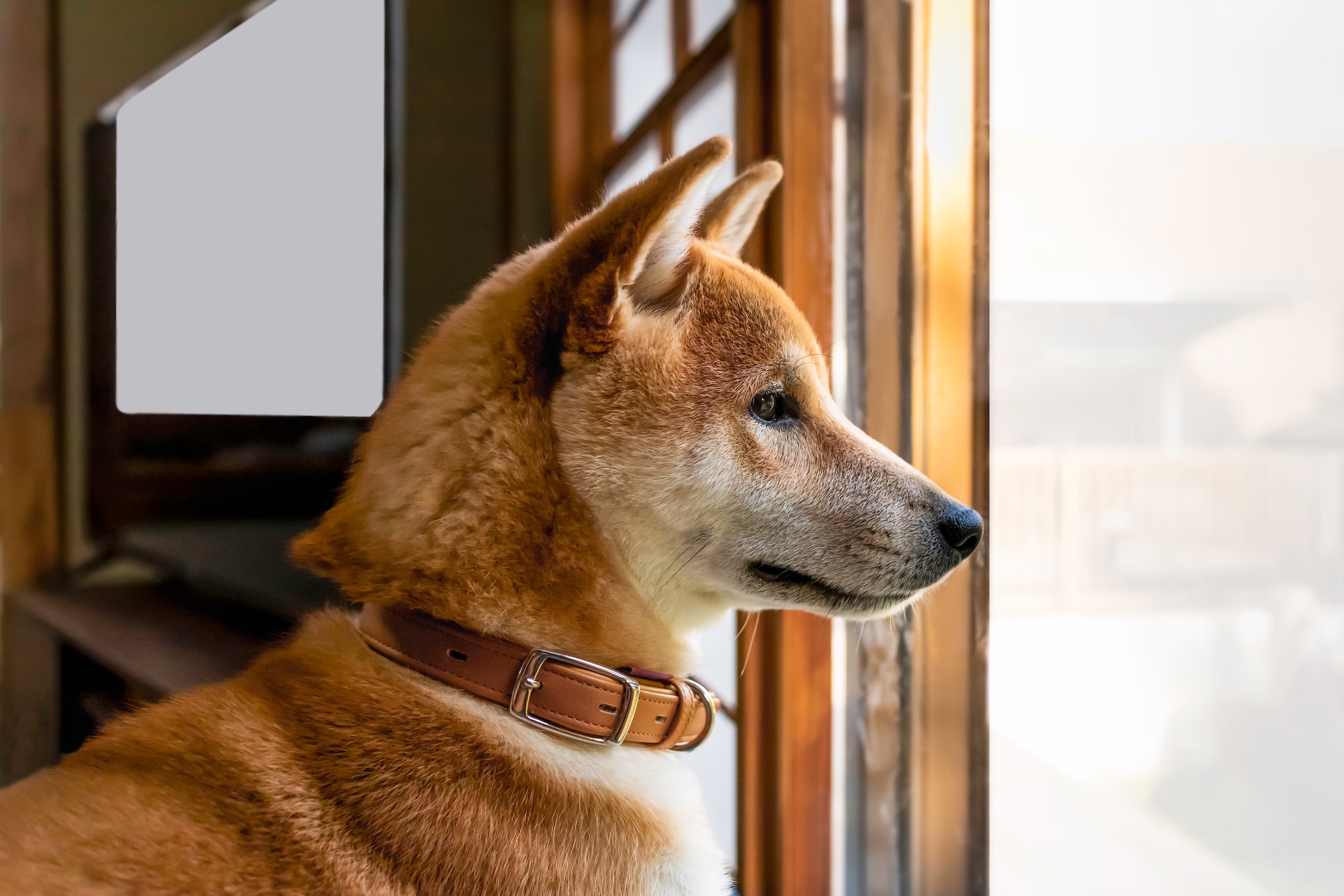The phrase “a tired dog is a good dog” is a well-worn adage for a reason. Exercise is a core component of dog care, no matter if they’re puppies or super agers. As it does for humans, exercise helps dogs build and maintain physical and mental health. But when you have a senior dog who is (or perhaps isn’t) starting to slow down, you might wonder what a safe and healthy exercise plan might look like.
How much exercise is enough for a senior? What kind of exercise is safe for older dogs? And what should you do if your senior refuses to slow down? Here’s everything you need to know about senior dogs and exercise.
What is a “senior” dog, anyway?
While conventional wisdom has long held that dogs age 7 years for every year, recent research shows that the concept of dog years doesn’t conform to that classic math (read more about the science of dog aging here). How a dog ages and when they’re considered a senior depends on their size, breed, and other factors including genetics, environment, and diet.
The general rule is:
- Giant breeds (100 pounds and up) are considered seniors around 6-7 years old
- Large breeds (60 to 100 pounds) are considered seniors around 7-8 years old
- Medium breeds (20 to 60 pounds) are considered seniors around 8-10 years old
- Small breeds (3 to 20 pounds) are considered seniors around 11-12 years old
How much exercise does your senior dog need?
It’s easy to mistake your senior’s new behaviors (increased napping, getting up slower, and a more leisurely walking pace) as proof that their daily exercise needs should be seriously curtailed. But age alone isn’t a reason to stop exercising.
Daily exercise is just as important for senior dogs as it is for prime-time adults. In fact, keeping your senior moving can be critical in maintaining quality of life as they move through their golden years. Seniors lose muscle mass, strength, and their sense of balance as they age, and older dogs are at increased risk of weight gain and obesity, arthritis, cancer, heart problems, and neurological degeneration (for example, dementia). Exercise is a key element in preventing or slowing the development of these conditions.
Take arthritis. Exercise can not only prevent weight gain, which can exacerbate the condition, experts agree that aerobic exercise can naturally help manage arthritic pain and help maintain joint mobility. Exercise is one of the first lines of defense vets recommend to prevent joint issues from progressing. So if your dog is starting to have trouble getting up from sitting or laying positions or if their gait becomes stiff, maintain a gentle daily exercise routine. If arthritis is a serious issue, talk to your vet about options—including medical and holistic treatments like cold-laser therapy, acupuncture, CBD and joint supplements, and prescription medication.
Experts recommend at least 30-60 minutes of exercise per day for adult dogs (and many dogs do better with even more). And while your senior may not be up for the half-day hikes they used to do, if they’re mobile, keep to a regular schedule of physical activity, including at least a half hour of daily walks. The amount of exercise your senior will need depends on a few factors, including breed (for example, whether they’re a working dog, with a high amount of energy, or a French buldog), and whether or not they were active when they were young. The more active your senior was when they were younger, the more activity they will likely need as they age.
Dr. Darryl Millis, an orthopedic veterinarian and the founder of My Lame Dog, says “moderation and a consistent amount of daily exercise are best. Exercise is especially important in the case of dogs who are overweight.”
How to get your senior the stimulation they need
While seniors still need at least 30 minutes of exercise per day, what does change is the intensity required to maintain optimal health. Where puppies and adult dogs often require high-intensity exercise, seniors may only need low-impact exercises such as slow walks and puzzles to keep their bodies in good shape and their minds sharp.
Prepare before you hit the streets
Before you take your senior out on any adventures, you should get them checked out by your vet. You should also be extra mindful of the temperature—avoid walking or playing too long outside in cold or hot weather. Keep older joints in mind and strive to exercise on grass or softer surfaces and avoid icy or slippery conditions, or have your senior wear booties to protect their paws and assist with traction.
“The focus of exercising a senior dog is to keep them moving and mobile, not to tire them out.”
Mind older joints at home
Keep your older dog from jumping off beds or any elevated surfaces. Even for healthy dogs, reduced muscle mass can mean joints are less supported than they once were, so a short jump that used to be a daily routine could spell injury or arthritis. Keep pet stairs or ramps handy.
Take a new approach to exercise
One of the best ways to give your senior at least 30 minutes of exercise per day without pushing them too hard is to split this time up and exercise several times throughout the day. Siny Tsang, a certified professional canine fitness trainer (CPCFT) and owner of Core Pawtential, says that senior dogs’ exercise requirements can be broken down into smaller chunks throughout the day.
“In fact,” she says, “I would encourage shorter, but more frequent, exercises over a long exercise duration for most senior dogs—for example, a 10-15-minute walk in the morning, a 10-minute walk in the afternoon, and a 20-30-minute walk in the evening. The focus of exercising a senior dog is to keep them moving and mobile, not to tire them out.”
Make sure to watch their movements; if they seem stiff, their breathing is labored, or they show any other signs of difficulty moving, slow down or stop and let them rest.
What are some alternative exercises good for senior joints?
There are many alternatives to the typical long walk that will keep your senior physically and mentally stimulated.
Scatter feeding: If you have access to a grassy area, such as a backyard, scatter healthy, low-calorie treats into the grass, and let your dog sniff and search. Tsang says this very low-impact exercise not only encourages the dog to use their nose, but also to move around to search for food, using their core muscles and moving their joints. If you want to scatter feed, start with a small area to help your dog be more successful, then slowly expand the range. Before doing this, be certain that the area hasn’t been treated with pesticides.
Figure-8 walking: Set up two cones (or whatever you have on hand that can stand in for cones) and have your dog walk around and across them in a figure-8 pattern. Start with the markers fairly wide apart and move them closer if your dog can easily navigate them. This simple exercise lets them get in some steps and helps with flexibility. To see a demonstration of this and other low-impact exercises, check out Tsang’s site).
Walk in water: This is “similar to regular walking, but the buoyancy will take the weight off and make walking easier on the joints while the resistance of the water encourages the muscles to work slightly harder,” Tsang says. If you’re going to do this, find a slow-flowing body of water such as a small stream or a pond, and make sure the water height falls somewhere in between the wrist and the elbow. Be mindful of the temperature and the current, and most importantly, remember that walking in water is more tiring than walking on land. Tsang says to keep water walk sessions short: start with five minutes, and then build up to 10-15-minute sessions.
Passive range-of-motion and strength exercises: These are exercises you can help your pet perform while they’re standing or lying down. Since they involve stretching and flexing your dog’s limbs, they’re best done on the advice of an expert. Speak to your vet about a program of therapeutic exercises you can do with your pet at home.
Food dispensers and puzzles: You can purchase a wide range of food dispensers and food puzzles, or you can make your own. When you introduce your dog to a food puzzle, be generous at the beginning. Tsang emphasizes that a food puzzle “is not really about them solving the puzzles; it’s more about engaging them both mentally and physically. They key is to make sure the dog enjoys the game.” An alternative to food puzzles is hiding some food in a scrunched up towel or delivery boxes. You can also put food dispensers in boxes to make it extra challenging if your dog is extra sharp.
Doggie “Push-ups:” If your dog knows basic commands like “sit” and “down” you can use them for a simple game that exercises body and mind. Starting on a non-slip surface, simply have your dog go from standing to sit to down then back to sit. Repeat. For a slightly harder variation, have them go from standing to down and then back to standing. Make sure your dog’s joints can handle this motion first.
New tricks and obedience training: Enrichment is one of the best ways to keep your dog active as they slow down. Do at least a few minutes of training every day and try teaching an aspirational skill that your dog hasn’t mastered, like a rock-solid recall, or “leave it.”
Exercise for senior dogs with moderate to severe arthritis
Seniors with arthritis can still get the stimulation they need with modified exercise routines. Instead of high-intensity games of fetch, running, and other tougher exercises, follow these tips:
- Increase the time you spend on mental exercises. Working out the brain can be just as exhausting as physical activity. Get your senior involved in activities such as nose work and teach them how to use puzzle toys.
- Who says an old dog can’t learn new tricks? Focus on training and obedience skills, which will stimulate them mentally and even tire them out.
- Try massage therapy. Canine massage can increase circulation, reduce inflammation, and help manage joint pain. It also has the added benefit of promoting bonding between you and your pup. Consult your vet first.
What if your senior dog hasn’t been exercising at all?
Depending on the strength and stamina of your dog, beginning with shorter bouts of exercise four to five times per day is better than a single marathon session, Millis says. As fitness improves, the length and speed of exercise can be increased and the frequency decreased. A good guideline is to increase the amount of exercise by 10% each week as long as the dog does not seem to pant excessively, have stiffness or soreness, or seem distressed with the amount of activity. Some occasional ball playing may be incorporated if it is safe to do so.
What if your senior dog won’t slow down?
Most seniors will start to slow down on their own. Sometimes, however, your aging friend might not be ready to dial it down, especially if they’re a more active breed. (Think herding dogs such as Australian shepherds.)
Some dogs tend to ignore pain and opt to play instead of rest. This can lead to permanent injury, such as irreversible joint damage, so it’s crucial not to mistake your dog’s desire to jump around with their ability to do so safely. It’s up to you to keep an eye on exercise intensity and duration, and to keep both within reasonable bounds, especially in warmer weather.
If your senior has particular trouble slowing down, there are plenty of low-impact exercises available to give them what they need. Some examples of low impact ideas include:
- Swimming
- Aqua treadmill (As these are specialty machines, consult your vet about how and where to do this, and only do it with professional supervision)
- Slow loose-leash walks with plenty of sniff stops (which are mentally stimulating in the same way that books and movies stimulate humans)
- Mental stimulation (puzzle games, nose work, etc)
Exercise can increase your old friend’s quality of life and even extend it, so be sure to get out and let them sniff, and walk among, the flowers.
This article was vetted by a vet.
Reviewed by Alex Schechter, DVM, founding veterinarian at Burrwood Veterinary.
